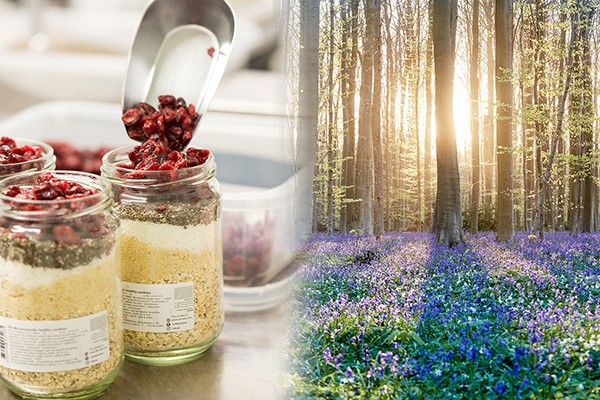Recently, the Commission proposed new EU-wide rules on packaging, to tackle this constantly growing source of waste and of consumer frustration. On average, each European generates almost 180 kg of packaging waste per year. Packaging is one of the main users of virgin materials as 40% of plastics and 50% of paper used in the EU is destined for packaging. Without action, the EU would see a further 19% increase in packaging waste by 2030, and for plastic packaging waste even a 46% increase. The new rules aim to stop this trend. For consumers, they will ensure reusable packaging options, get rid of unnecessary packaging, limit overpackaging, and provide clear labels to support correct recycling. For the industry, they will create new business opportunities, especially for smaller companies, decrease the need for virgin materials, boosting Europe’s recycling capacity as well as making Europe less dependent on primary resources and external suppliers. They will put the packaging sector on track for climate neutrality by 2050.
The Commission also brings clarity to consumers and industry on biobased, compostable and biodegradable plastics: setting out for which applications such plastics are truly environmentally beneficial and how they should be designed, disposed of and recycled.
The proposals are key building blocks of the European Green Deal’s Circular Economy Action Plan and its objective to make sustainable products the norm. They also respond to specific demands of Europeans as expressed at the Conference on the Future of Europe.
Preventing packaging waste, boosting reuse and refill, and making all packaging recyclable by 2030
The proposed revision of the EU legislation on Packaging and Packaging Waste has three main objectives. First, to prevent the generation of packaging waste: reduce it in quantity, restrict unnecessary packaging and promote reusable and refillable packaging solutions. Second, to boost high quality (‘closed loop’) recycling: make all packaging on the EU market recyclable in an economically viable way by 2030. And finally, to reduce the need for primary natural resources and create a well-functioning market for secondary raw materials, increasing the use of recycled plastics in packaging through mandatory targets.
- The headline target is to reduce packaging waste by 15% by 2040 per Member State per capita, compared to 2018. This would lead to an overall waste reduction in the EU of some 37% compared to a scenario without changing the legislation. It will happen through both reuse and recycling.
- To foster reuse or refill of packaging, which has declined steeply in the last 20 years, companies will have to offer a certain percentage of their products to consumers in reusable or refillable packaging, for example takeaway drinks and meals or e-commerce deliveries. There will also be some standardisation of packaging formats and clear labelling of reusable packaging.
- To address clearly unnecessary packaging, certain forms of packaging will be banned, for example single-use packaging for food and beverages when consumed inside restaurants and cafes, single-use packaging for fruits and vegetables, miniature shampoo bottles and other miniature packaging in hotels.
- Many measures aim to make packaging fully recyclable by 2030. This includes setting design criteria for packaging; creating mandatory deposit return systems for plastic bottles and aluminium cans; and making it clear which very limited types of packaging must be compostable so that consumers can throw these to biowaste.
- There will also be mandatory rates of recycled content that producers have to include in new plastic packaging. This will help turn recycled plastic into a valuable raw material – as already shown by the example of PET bottles in the context of the Single-Use Plastics Directive.
The proposal will clear up confusion on which packaging belongs to which recycling bin. Every piece of packaging will carry a label showing what the packaging is made of and in which waste stream it should go. Waste collection containers will carry the same labels. The same symbols will be used everywhere in the EU.
By 2030, the proposed measures would bring greenhouse gas emissions from packaging down to 43 million tonnes compared to 66 million if the legislation is not changed – the reduction is about as much as the annual emissions of Croatia. Water use would be reduced by 1.1 million m3. The costs of environmental damage for the economy and society would be reduced by €6.4 billion relative to the baseline 2030.
Single-use packaging industries will have to invest into a transition, but the overall economic and job creation impact in the EU is positive. Boosting reuse alone is expected to lead to more than 600,000 jobs in the reuse sector by 2030, many of them at local small and medium sized companies. We expect much innovation in packaging solutions making it convenient to reduce, reuse and recycle. Measures are also expected to save money: each European could save almost €100 per year, if businesses translate savings to consumers.
Clearing up confusion around biobased, biodegradable and compostable plastics
The use and production of biobased, biodegradable and compostable plastics has been steadily increasing. A number of conditions have to be met for these plastics to have positive environmental impacts, rather than exacerbating plastic pollution, climate change and biodiversity loss.
The Commission’s new framework clarifies in what way these plastics can be part of a sustainable future.
Biomass used to produce biobased plastics must be sustainably sourced, with no harm to the environment and in respect of the ‘cascading use of biomass’ principle: producers should prioritise the use of organic waste and by-products as feedstock. In addition, to fight greenwashing and avoid misleading consumers, producers need to avoid generic claims on plastic products such as ‘bioplastics’ and ‘biobased’. When communicating on biobased content, producers should refer to the exact and measurable share of biobased plastic content in the product (for example: ‘the product contains 50% biobased plastic content’).
Biodegradable plastics must be approached with caution. They have their place in a sustainable future, but they need to be directed to specific applications where their environmental benefits and value for the circular economy are proven. Biodegradable plastics should by no means provide a licence to litter. Also, they must be labelled to show how long they will take to biodegrade, under which circumstances and in which environment. Products that are likely to be littered including those covered by the Single-Use Plastics Directive cannot be claimed to be or labelled as biodegradable.
Industrially compostable plastics should only be used when they have environmental benefits, they do not negatively affect the quality of the compost and when there is a proper biowaste collection and treatment system in place. Industrially compostable packaging will only be allowed for tea bags, filter coffee pods and pads, fruit and vegetable stickers, and very light plastic bags. The products must always specify that they are certified for industrial composting, in line with EU standards.
Next steps
The proposal on packaging and packaging waste will now be considered by the European Parliament and the Council, in the ordinary legislative procedure.
The policy framework on biobased, biodegradable and compostable plastics will guide future EU work on this issue, for example ecodesign requirements for sustainable products, funding programmes and international discussions. The Commission encourages citizens, public authorities and businesses to use this framework in their policy, investment or purchasing decisions.
Background
Goods need packaging to be protected and safely transported, but packaging and packaging waste have a significant impact on the environment and use of virgin materials. The amount of packaging waste is growing, frequently at a faster pace than GDP. Packaging waste increased by more than 20% over the last 10 years in the EU and is forecast to soar by another 19% until 2030, if no action is taken.
Biobased, biodegradable and compostable plastics are emerging in our daily lives as alternatives to conventional plastics. Citizens can find them for example in packaging, consumer goods and textiles as well as other sectors. Since they are called ‘bio’, consumers have the perception that they are necessarily good for the environment. However, this is only true to a certain extent.
Today’s package addressing these issues follows the first Circular Economy package of measures adopted in March 2022. It included the new Regulation on Ecodesign for Sustainable Products, the EU Strategy for Sustainable and Circular Textiles, and proposed new measures to empower consumers and enable them to play a fuller role in the green transition.
Source: European Commission






